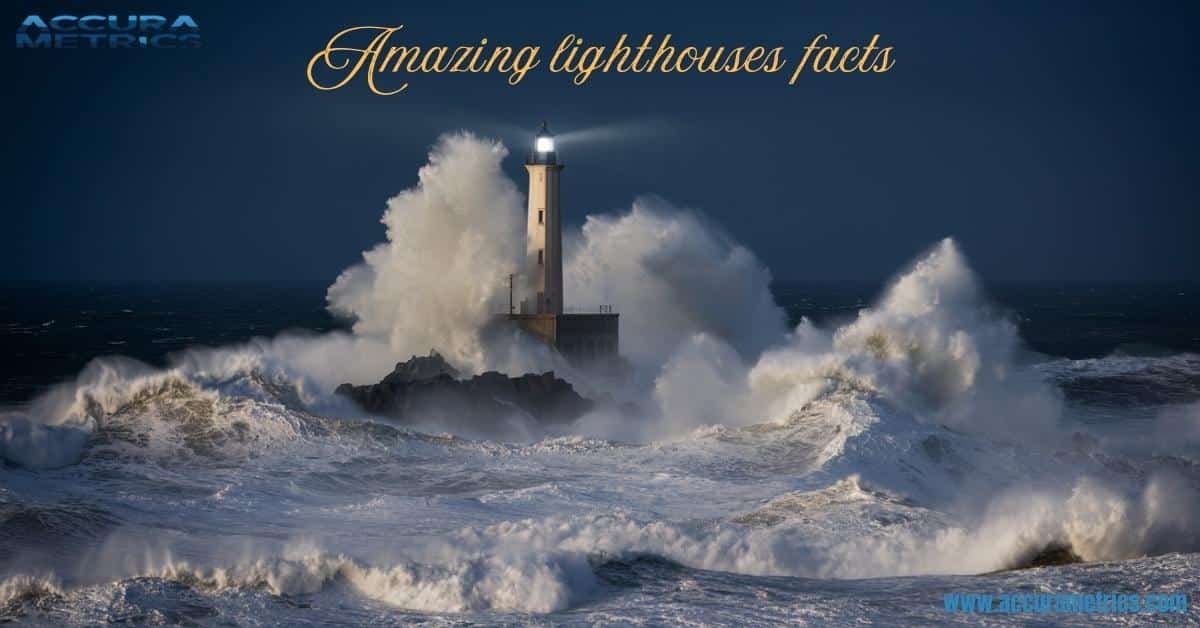Lighthouse are not just tall towers, they are vital guides for sailors. But did you know their heights can vary widely? Some are giant structures reaching for the sky, while others are smaller but still essential.
In this post, we will explore how long a lighthouse is, the different heights of lighthouses, the factors that influence their size, and highlight some of the tallest and most famous ones. Whether you are curious or planning to visit one, this guide has all the info you need.
Understanding Lighthouse Height
When discussing how tall they are, it is essential to clarify what “height” refers to. The height can be measured in two primary ways:
- Tower Height: This is the measurement from the base of the lighthouse to the top of the structure.
- Focal Height: This refers to the distance from the water level to the light source at the top of the tower.
It is important to distinguish between these two, as the focal height plays a crucial role in the lighthouse’s ability to be seen from a distance, especially in foggy or stormy conditions. The taller the focal height, the further the light can travel across the water.
While the height of the tower is important in terms of architectural design, the focal height is usually the more critical measurement when it comes to the lighthouse’s function in maritime navigation.
History of the Lighthouse
The lighthouse has a long and fascinating history, evolving from simple guiding fires to towering structures that helped sailors navigate treacherous waters. Here’s a brief overview:
- Ancient Beginnings: The first known lighthouse, the Pharos of Alexandria, was built in 280 BCE in Egypt to guide ships into the harbor of Alexandria.
- Medieval Advances: Early lighthouses were often simple fires or open flames placed on hilltops or in towers.
- 17th Century: The first true lighthouses began to appear in Europe, featuring more permanent structures with a light source for long-range visibility.
- 19th Century Innovation: The invention of the Fresnel lens improved lighthouse brightness and range, enabling clearer guidance for sailors.
- Modern Day: While modern technology has reduced their necessity, many lighthouses still stand as cultural and historical landmarks.
Factors Affecting Height
Several factors determine the height of a lighthouse. These can range from geographical features to advancements in technology. Here are some of the main reasons why lighthouses vary in height:
Geographic Location
- Coastal terrain plays a significant role in determining the height of a lighthouse. Lighthouses located on cliffs or high ground may not need to be as tall because their height above sea level is already substantial.
- Lighthouses built on flat land or near the shoreline may need to be taller to ensure visibility over the surrounding area.
Water Depth and Visibility Needs
- The depth of the water and the distance from the shore also impact how tall a lighthouse needs to be. In areas where ships are likely to approach from far out at sea, a taller structure with a high focal point is necessary.
Historical Context
- Lighthouses evolved in response to the growing needs of maritime trade. In ancient times, structures were often short due to limited building technology and materials. Over time, advancements in engineering allowed them to reach greater heights, improving their range and effectiveness.
Technological Advancements
- In the past, lighthouse were manually operated, relying on kerosene lamps or optical lenses. Modern lighthouses, however, use LED lights and automated systems, which reduce the need for towering structures. As a result, some modern lighthouse are shorter but still function effectively.
Read Further “How Big is Alaska? dimensions and Surprising Comparisons”
Comparing Lighthouse Heights
To put the heights of lighthouses into perspective, here is a fun comparison with some well known structures:
| Structure | Height (in meters) | Height (in feet) |
| Île Vierge Lighthouse | 83 | 271 |
| Statue of Liberty | 93 | 305 |
| Eiffel Tower | 330 | 1,083 |
| Empire State Building | 443.2 | 1,454 |
| Punta Penna Lighthouse | 70 | 230 |
As you can see, even the tallest lighthouses, such as the Île Vierge, while impressive, still fall short when compared to modern skyscrapers like the Empire State Building. However, the height of a lighthouse is much more about its functional role than its size in comparison to other structures.
The Importance of Lighthouse Height in Navigation
The height of a lighthouse directly influences its visibility and range. Lighthouses are crucial navigational aids, especially when ships are sailing through dangerous waters. A lighthouse’s height ensures that it can be seen from a great distance, which is essential for ships to navigate safely.
Here is how the height of a lighthouse impacts its function:
- Increased Visibility: The higher the lighthouse, the further its light can be seen, helping ships navigate rough or foggy seas.
- Navigation in Stormy Conditions: In stormy weather, the tall light of a lighthouse provides a beacon of safety for vessels in distress.
- Safety for Coastal Vessels: In areas with heavy maritime traffic, tall lighthouses help ships maintain their course and avoid collisions or grounding.
Lighthouses with Unique Heights and Features
Not all lighthouses are tall and imposing. Some lighthouses are short but incredibly effective, while others have unique characteristics that make them stand out.
- Lighthouses on Cliffs: Structures located on high cliffs or rocky outcrops often do not need to be as tall. For example, the Fastnet Rock Lighthouse in Ireland is perched on a small rock island, and while it is only 50 meters (164 feet) tall, it is still visible from a great distance.
- Lighthouses on Small Islands: On small islands or offshore rocks, structures may be built taller to ensure they can be seen from the sea. For example, the Tory Island structure in Ireland is located on a small island, and while it is only 40 meters (131 feet) tall, its location makes it a vital navigational tool.
- Shorter Lighthouses: In some regions, structures can be quite short but still serve their purpose. The Edgartown Lighthouse in Massachusetts is only 12 meters (39 feet) tall but is positioned near the shore and continues to guide vessels safely.
Notable Lighthouses in Different Countries
Across the globe, several countries boast impressive structures. Here is a snapshot of some notable ones by region:
Read Intrested Fects “Swimming Pool Dimensions: Everything You Need to Know About”
1. First Lighthouse in the World
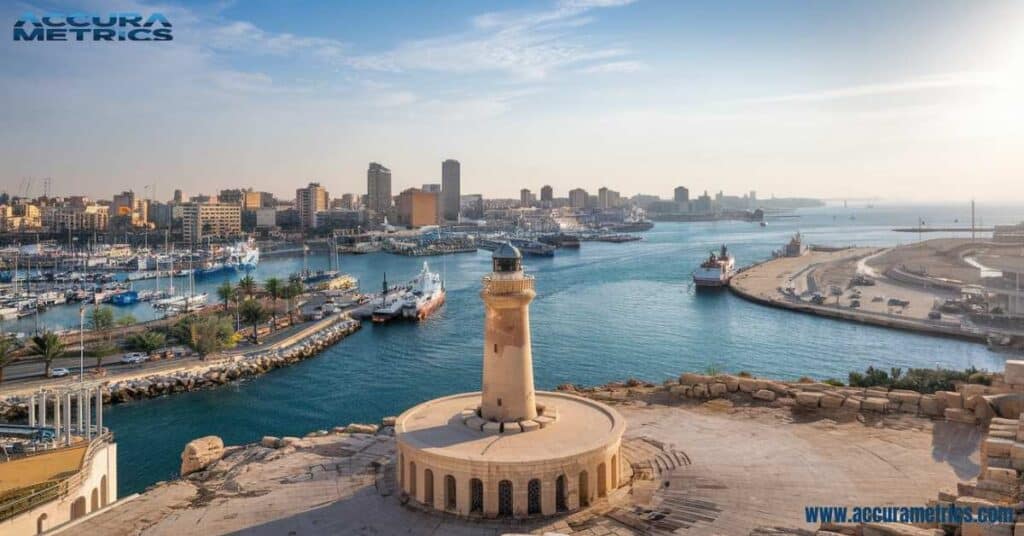
Location: Alexandria, Egypt
Height: Estimated 100 to 130 meters (330 to 430 feet)
Significance: The Pharos of Alexandria is considered the first lighthouse ever built. Constructed around 280 BC, it was a monumental structure designed to guide sailors into the bustling harbor of Alexandria. This lighthouse stood tall on the island of Pharos and became one of the Seven Wonders of the Ancient World. The Pharos was so influential that the word “pharos” is still used to refer to lighthouses in many languages.
2. Île Vierge Lighthouse
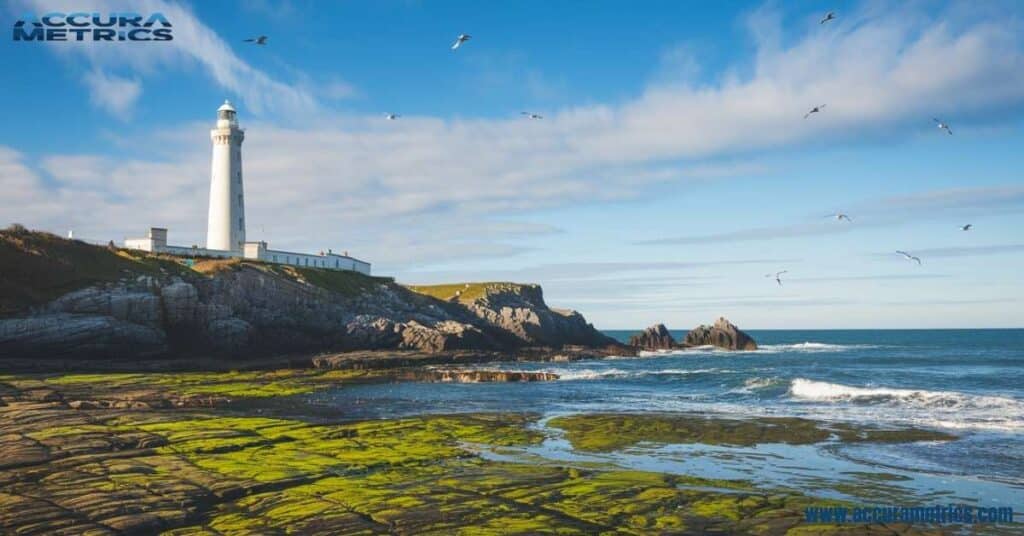
- Height: 83 meters (271 feet)
- Location: Brittany, France
- Significance: The tallest lighthouse in the world, standing on a rocky island off the coast of France. It offers a significant range of visibility to ships approaching the northern coast of France.
3. Cape Hatteras Lighthouse
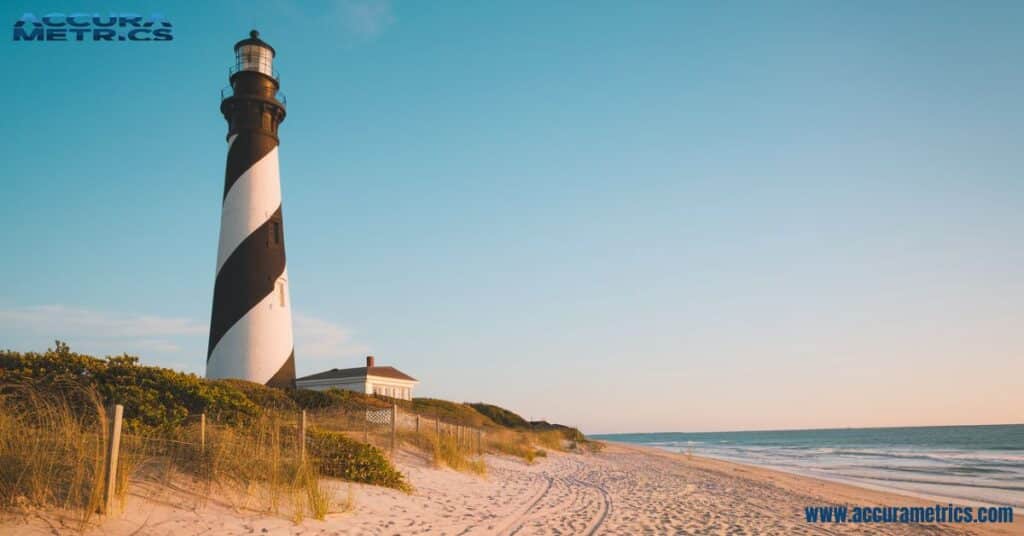
- Height: 64 meters (210 feet)
- Location: North Carolina, USA
- Significance: The tallest brick lighthouse in the United States, it helps guide vessels through the dangerous waters of the Outer Banks, known for frequent shipwrecks.
Read Amazing About “Joe Rogan House Dimensions: Amazing Facts You Should Know”
4. Phare de Gatteville

- Height: 75 meters (246 feet)
- Location: Normandy, France
- Significance: One of the tallest in France, it helps ships navigate the English Channel, one of the busiest maritime routes in the world.
5. Punta Penna Lighthouse

- Height: 70 meters (230 feet)
- Location: Abruzzo, Italy
- Significance: Situated on a rocky peninsula, this lighthouse is an essential beacon for vessels entering the Adriatic Sea, ensuring their safe passage through busy waters.
6. Lesnoy Mole Rear Range Light

- Height: 92 meters (302 feet)
- Location: Kaliningrad, Russia
- Significance: The tallest lighthouse in Russia, offering vital navigation assistance to ships approaching the Baltic Sea.
7. Mulantou Lighthouse

- Height: 74 meters (243 feet)
- Location: Zhuhai, China
- Significance: This lighthouse, positioned on the South China Sea, guides ships along one of the busiest shipping lanes in the world.
8. Tory Island Lighthouse

- Height: 40 meters (131 feet)
- Location: Tory Island, Ireland
- Significance: Although not very tall, this lighthouse stands on a small island, making it visible to ships traveling along the North Atlantic coast of Ireland.
9. Fastnet Rock Lighthouse
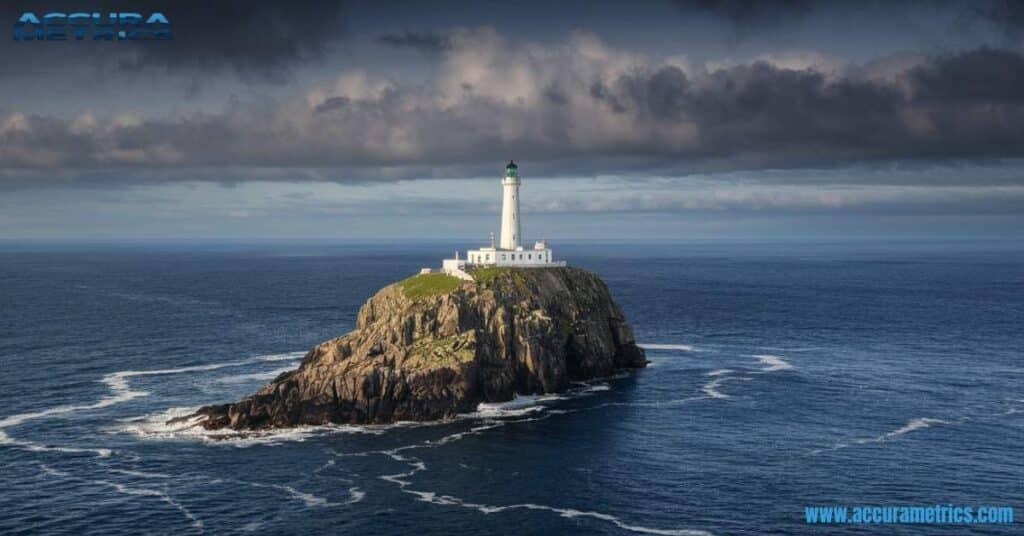
- Height: 50 meters (164 feet)
- Location: Fastnet Rock, Ireland
- Significance: Known as the “Teardrop of Ireland,” this lighthouse is located on a small rock island in the Atlantic Ocean, marking one of the most famous maritime routes.
Read Further “Mike Tyson’s Home Dimensions: Size, Space, and Design”
10. Lanterna Lighthouse
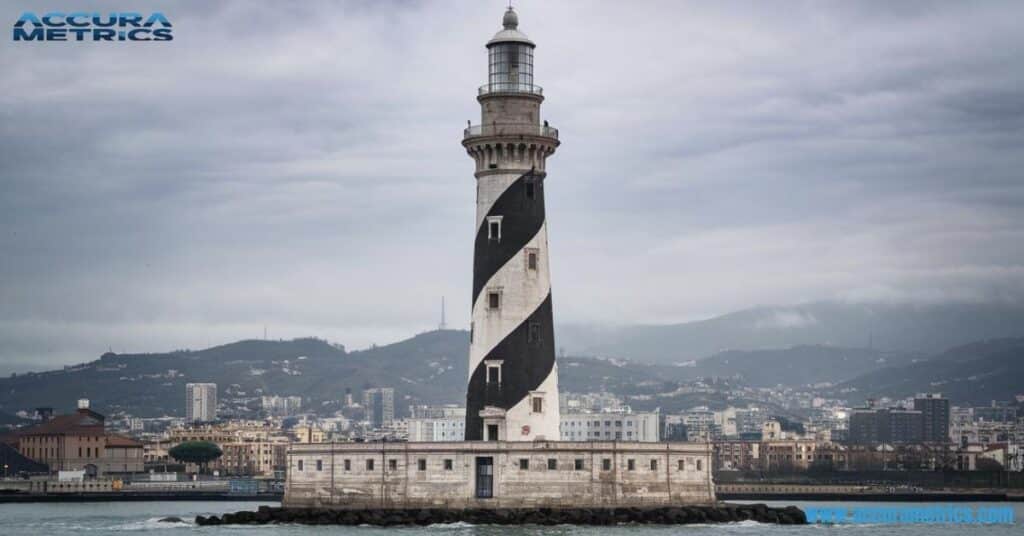
- Height: 76 meters (249 feet)
- Location: Genoa, Italy
- Significance: One of the oldest lighthouses in the world, still operational today, guiding ships into the port of Genoa.
11. St. Augustine Lighthouse
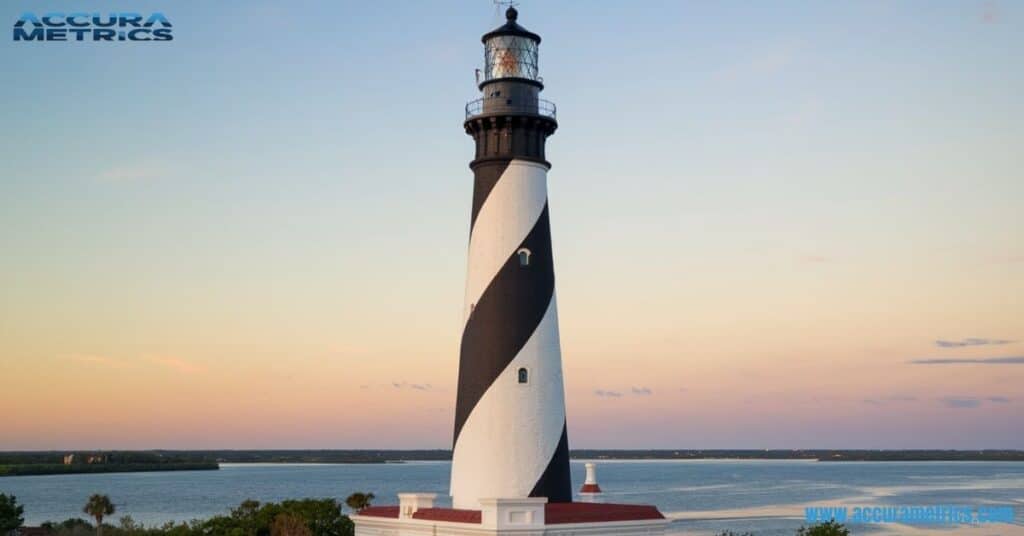
- Height: 61 meters (200 feet)
- Location: St. Augustine, Florida, USA
- Significance: This historic structure, painted with a distinctive black and white spiral pattern, is one of the most famous in the United States. It is a symbol of St. Augustine, the oldest city in the country.
12. The Shortest Lighthouse
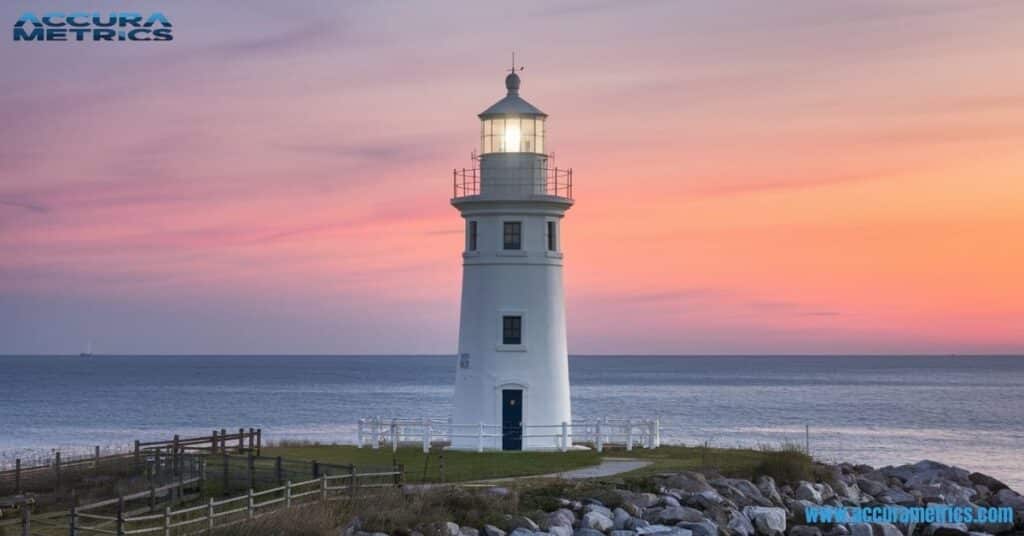
- Location: Norderney, Germany, on the North Sea coast.
- Height: Only 29 feet (9 meters) tall.
- Purpose: Despite its small stature, it serves as a key navigational aid for ships in the area.
- Historical Significance: Built in 1874, it has become a landmark for the island of Norderney.
- Unique Feature: Its small height is compensated by its bright light, which is visible for many miles across the sea.
13. The World Most Dangerous Lighthouse
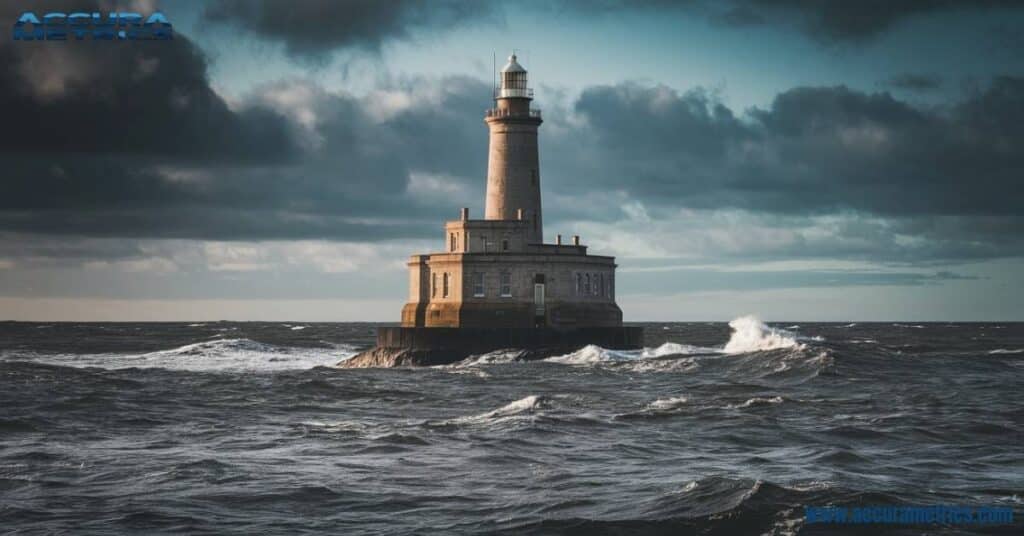
- Location: Off the coast of Angus, Scotland, in the North Sea.
- Height: 35 meters (115 feet) tall.
- Dangerous Conditions: Located on a submerged rock, the Bell Rock Lighthouse is subject to fierce storms, high waves, and treacherous tides.
- Historical Significance: Completed in 1811, it is the world oldest surviving sea washed lighthouse.
- Famous For: The construction was perilous, with many workers losing their lives due to the harsh conditions. It is often considered one of the most dangerous places to build a lighthouse due to its unpredictable sea and weather conditions.
Read Intrested Fects About “How Many Ounces in a Gallon? Your Easy Measurement Guide”
Lighthouse Height and Its Decline in Modern Use
With the advent of modern navigation technologies like GPS, radar, and automated systems, the need for tall lighthouses has diminished. Many contemporary lighthouses are now shorter, relying on automated systems to guide vessels safely and efficiently.
However, many historic structures continue to play a vital role in maritime heritage and tourism. Despite technological advances, tall structures remain symbols of safety and navigation. They still evoke a sense of wonder and awe for those who visit them.
FAQs on Lighthouses
Where is the largest lighthouse in the world?
The largest in the world by height is the Île Vierge in Finistère, France. At 83 meters (271 feet), it is the tallest traditional structure. Completed in 1902, this granite building is a significant landmark, guiding ships safely along the coast.
What is the world record lighthouse?
The world record for the tallest lighthouse is held by the Île Vierge in France. It reaches a height of 83 meters (271 feet). This impressive structure is a beacon of navigation safety and remains an engineering marvel of the early 20th century.
What is Europe’s biggest lighthouse?
The tallest lighthouse in Europe is the one in Genoa, Italy. Standing at 76 meters (249 feet), it is also the tallest in the Mediterranean. Built in 1543, this historic structure remains an essential navigational aid for ships entering the busy port of Genoa.
Where is the most dangerous lighthouse in the world?
The Bell Rock Lighthouse off the coast of Scotland is often considered one of the most dangerous in the world. Built on the Bell Rock Reef, it is exposed to severe weather conditions, including high waves and storms.
What is the world’s loneliest lighthouse?
The Wolf Rock Lighthouse off Cornwall, England, is one of the world’s loneliest. Built in 1870 on a remote rocky outcrop, its crew faced isolation and harsh weather, with rare trips to shore.
Read More “What Is Land Measurement? And How to Measure It”
Conclusion
Lighthouse heights vary significantly depending on their location and purpose. From towering structures to smaller beacons, each one plays a crucial role in ensuring maritime safety worldwide.
Whether you are fascinated by their sheer size, the history behind their construction, or the technological innovations that enhance their role in modern navigation, lighthouses continue to stand as symbols of hope for sailors and points of curiosity for everyone else.
Read More “Trump Tower Dimensions: New York’s Iconic Landmark”

My name is Linda, and I am an experienced blogger with a passion for precision and craftsmanship. With years of expertise, I contribute to Accura Matrics, bringing a wealth of knowledge and a keen eye for detail. My insightful articles and expert tips are designed to help readers achieve excellence in their measurements and dimensions projects, offering valuable guidance in the pursuit of accurate and thoughtful design.

